Advice
The Zero-Fuckery Quick-Create Guide To Kick-Ass Characters (And All The Crazy Plot Stuff That Surrounds ‘Em)
When writers are tasked with creating characters, we are told to try these character exercises that entreat us to answer rather mad questions about them: hair color, eye color, toe length, nipple hue, former job, phone number of former job supervisor, what she had for lunch, if she were a piece of Ikea furniture what piece would she be (“Billy bookcase!

NO WAIT, A SKJARNNGFLONG LINGONBERRY-FLAVORED COCKTAIL TRAY”). And so on and so forth. Most of these are, of course, abject badger-shite. They get you as close to creating a strong, well-realized and interesting character as jumping off your roof with a blankie on your back gets you to flying. And yet, I am frequently emailed (or in the old English, ymailt) about how one creates good characters on the fly. Let’s do this. The Character Logline:
The Female Character Flowchart. Strunk, William, Jr. 1918. The Elements of Style. Phoenixglass: 102 Resources for Fiction Writers ...
Colson Whitehead’s Rules for Writing. The Serendipity Workshop: Lost on the Border at Twilight. Finding — and Using — Your Life’s Essential Strangeness You mention a friend you haven’t heard from in twenty years . .. and three days later you receive an e-mail from that friend.Your child tells you who is on the other end of the phone . .. before you pick it up — or even stranger, right before it rings.
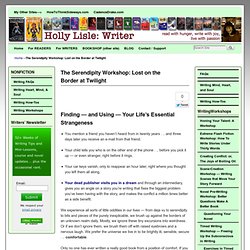
Ten Steps to Finding Your Writing Voice. Your job as a writer is much more than just selling your books, believe it or not.
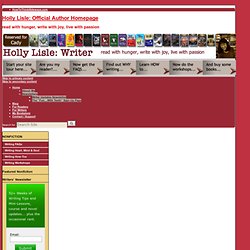
Your job — if you want to make a living at this, anyway — is to sell yourself. You are selling your unique perspective on life, your unique collection of beliefs, fears, hopes and dreams, your memories of childhood tribulation and triumphs and adult achievements and failures . . . your universe. Anybody can sit down and write a story or a book — that is simply a matter of applying butt to chair and typing out three or four or ten pages a day until the thing is done. But not every book is salable, not every salable book will find an audience, and not every book that finds an audience will be able to bring the readers back for more of what the writer is selling.
Your goal is to achieve all three of those milestones: To sell your work; To reach first-time readers with it; To win these first-time readers over as repeat readers of your work.
How to Finish A Novel. The problem with novels is that you can’t sit down in one day and complete one from start to finish. (At least I can’t.
La chose qui dort dans ton lit » 50 Tips on How to Write Good.
25 Things You Should Know About Word Choice. 1.
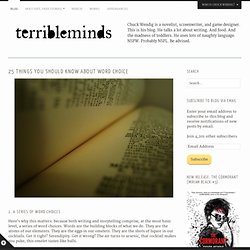
A Series Of Word Choices Here’s why this matters: because both writing and storytelling comprise, at the most basic level, a series of word choices. Words are the building blocks of what we do. They are the atoms of our elements. They are the eggs in our omelets. 2. Words are like LEGO bricks: the more we add, the more we define the reality of our playset.
201 Ways to Arouse Your Creativity. Arouse your creativity Electric flesh-arrows … traversing the body.

A rainbow of color strikes the eyelids. A foam of music falls over the ears. It is the gong of the orgasm. ~ Anais Nin. 12 Timeless Writing Tips from Mark Twain. 50 Exercises for Story Writers. English 50 – Intro to Creative Writing: Exercises for Story Writers Basic Theory: What is a short story?
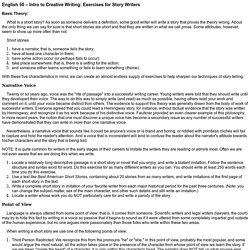
As soon as someone delivers a definition, some good writer will write a story that proves the theory wrong. About the only thing we can say for sure is that short stories are short and that they are written in what we call prose.
A Simple Novel Outline. Just as every tree is different but still recognizably a tree, every story is different but contains elements that make it a story.
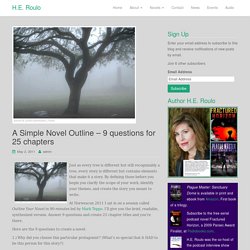
By defining those before you begin you clarify the scope of your work, identify your themes, and create the story you meant to write. At Norwescon 2011 I sat in on a session called Outline Your Novel in 90-minutes led by Mark Teppo. I’ll give you the brief, readable, synthesized version. Answer 9 questions and create 25 chapter titles and you’re there. Here are the 9 questions to create a novel: 1.) 2.) 3.) 4.) 5.) 6.) 7.) 8.) 9.)
How to Write a Novel Using the Snowflake Method. 5 situations where it's better to tell than show in your fiction.
Good stuff; thanks for the article, and I agree with most of it.

I think I disagree, though, at least partly, with your point near the end about the emotional/psychological stuff; I think that a lot of the time that's exactly what "show, don't tell" is meant to be all about. For example, if your character is tired, you can say "She was tired.
" Or you can indicate indirectly, through her actions and her dialogue and other people's reactions to her, that she's tired. The latter is often a lot more effective in conveying the idea that she's tired.








